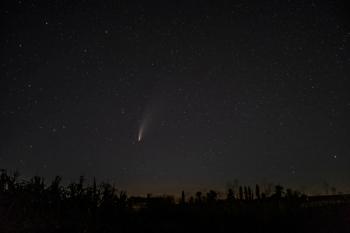
Real-Time Protease Biomarker Tracking With a Peptide SPR Biosensor
Key Takeaways
- The peptide-based biosensor uses MP-SPR for real-time monitoring of MMP-9 activity, offering unprecedented clarity and speed compared to traditional methods.
- MP-SPR captures multiple optical parameters simultaneously, allowing precise modeling of SPR curves and characterization of physical changes in peptide layers.
A research team has developed the first short synthetic peptide-based biosensor for real-time tracking of the disease-related protease matrix metalloproteinase-9 (MMP-9), using multi-parametric surface plasmon resonance spectroscopy (MP-SPR).
Introduction
Matrix metalloproteinase-9 (MMP-9) plays a central role in cancer progression, neurodegeneration, inflammation, and wound pathology. Traditional detection tools such as enzyme-linked immunosorbent assay (ELISA), zymography, and Förster resonance energy transfer (FRET) assays are widely used but are slow, expensive, and unable to measure real-time enzymatic activity. The new study titled “Peptide-based biosensor for real-time monitoring of protease biomarker activity using multi-parametric surface plasmon resonance spectroscopy” by Rai and co-workers (1) introduces a rapid peptide-based biosensor that leverages MP-SPR to capture MMP-9 activity with unprecedented clarity and speed. Peptide functionalization SPR has a long history of protein biomarker detection (1–3)
The work was conducted by researchers Pratika Rai, Sabrina N. Hoba, Celine Buchmann, Christian Kersten, Tanja Schirmeister, Bernd Bufe, and Alexey Tarasov from the Faculty of Computer Sciences and Microsystems Technology at Kaiserslautern University of Applied Sciences (Zweibrücken, Germany) and the Institute of Pharmaceutical and Biomedical Sciences at Johannes Gutenberg-University Mainz (Mainz, Germany).
A Peptide Platform With Real-Time Spectroscopic Sensitivity
Unlike ELISA, which measures concentration rather than activity, the new biosensor uses short, synthetic peptides specifically engineered as MMP-9 substrates. When immobilized on the MP-SPR sensor surface, these peptides undergo cleavage between Gly (P1) and Met (P1′) when exposed to active MMP-9. This enzymatic event produces an immediate, measurable decrease in the SPR signal, allowing researchers to observe real-time proteolysis.
MP-SPR, unlike traditional single-wavelength SPR, captures multiple optical parameters simultaneously, such as refractive index, surface coverage, and layer thickness. Rai and colleagues emphasize that the multi-wavelength design enables modeling of SPR curves with much higher precision than conventional SPR methods (1). This expanded capability allows researchers not only to detect the enzymatic event but also to characterize the physical changes in the peptide layer before and after cleavage, an advantage not shared by AFM or ellipsometry, which provide discontinuous or model-dependent measurements.
Why Multi-Parametric SPR Surpasses Legacy Methods
MP-SPR solves several limitations intrinsic to other characterization techniques. Atomic force microscopy (AFM), for instance, suffers from tip-induced variability and slow scanning speeds, making it unsuitable for observing dynamic biochemical events. Ellipsometry, meanwhile, requires optical models and is highly sensitive to surface irregularities. In contrast, MP-SPR’s goniometric (directional) scanning system (40°–78°) and multi-wavelength operation allow continuous kinetic tracking without mechanical disturbance, even when surface topography varies.
This real-time kinetic capability makes MP-SPR particularly well suited for studying fast protease interactions such as MMP-9 cleavage of peptide substrates.
Performance: Picomolar Sensitivity Across Physiological Media
The biosensor’s analytical performance is notable: a limit of detection of 0.34 pM in buffer and 0.56 pM in cell culture medium (RPMI-1640), with a dynamic range from 5 pM to 9 nM (1). This spans the clinically relevant concentration range of MMP-9. Importantly, the sensor responded consistently in both buffer and physiological media, suggesting it can be used to monitor MMP-9 released directly from living cells in future studies.
Most previous peptide-based protease sensors relied on electrochemical methods that displayed incomplete signal suppression, nonspecific adsorption, or required exogenous electroactive species. In contrast, this MP-SPR design requires no labels or signal-enhancing tags, significantly simplifying the detection chemistry.
Implications and Future Directions
The authors state that this is the first reported MP-SPR biosensor using short synthetic peptides to monitor MMP-9 activity in real time (1). Beyond MMP-9, the sensing concept is readily adaptable to other proteases simply by altering peptide sequences. Future challenges will include minimizing cross-reactivity and validating performance in clinical samples.
By merging synthetic peptide chemistry with multi-parametric spectroscopy, Rai and colleagues present a powerful and adaptable biosensing platform that may accelerate diagnostic development across oncology, neurology, and wound care.
References
(1) Rai, P.; Hoba, S. N.; Buchmann, C.; Kersten, C.; Schirmeister, T.; Bufe, B.; Tarasov, A. Peptide-Based Biosensor for Real-Time Monitoring of Protease Biomarker Activity Using Multi-Parametric Surface Plasmon Resonance Spectroscopy. Biosens. Bioelectron. 2025, 117586. DOI:
(2) Bolduc, O. R.; Pelletier, J. N.; Masson, J.-F. SPR Biosensing in Crude Serum Using Ultralow Fouling Binary Patterned Peptide SAM. Anal. Chem. 2010, 82 (9), 3699–3706. DOI:
(3) Ermini, M. L.; Chadtová Song, X.; Špringer, T.; Homola, J. Peptide Functionalization of Gold Nanoparticles for the Detection of Carcinoembryonic Antigen in Blood Plasma via SPR-Based Biosensor. Front. Chem. 2019, 7, 40. DOI:
Newsletter
Get essential updates on the latest spectroscopy technologies, regulatory standards, and best practices—subscribe today to Spectroscopy.





